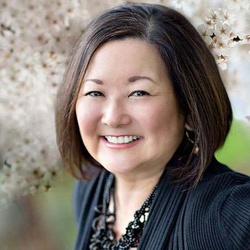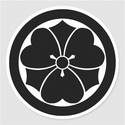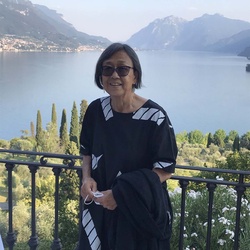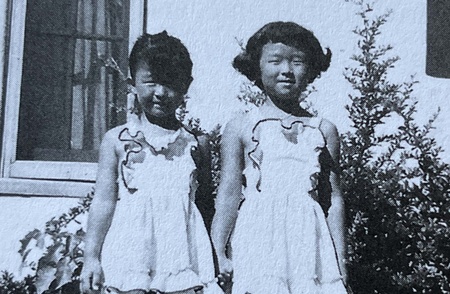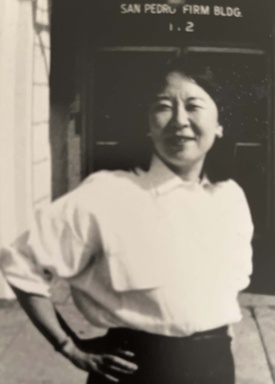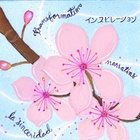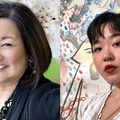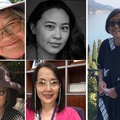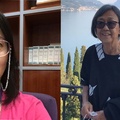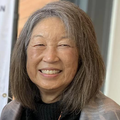In the spirit of “remembrance” with Day Of Remembrance programs happening all around the country — we feature personal tributes by two Sansei writers, Carolee Okamoto, based in Washington, and Kathy Masaoka, based in Los Angeles. Carolee’s poem honors the warrior within her grandmother, a samurai’s daughter and a farmer’s wife. Kathy’s essay pays homage to her late, older sister Judy Nishimoto and the influence of her passionate, determined, and powerful spirit. Enjoy...
— traci kato-kiriyama
* * * * *
Carolee Okamoto is a Sansei who began writing and creating art in 2017, after retiring from teaching health informatics and information management at the University of Washington in 2015. Carolee’s late emergence into writing and art was spurred by a need to tell her parents’ story. Patty and Keith Okamoto were incarcerated by the War Relocation Authority at Jerome, AR, and Poston, AZ, respectively. Carolee grew up in south Texas, where she and her family were the only Nikkei in a town of 10,000. She graduated from the University of Texas and holds an MBA from Houston Baptist University. She later obtained a Residential Design diploma and a Fashion Marketing degree from the Seattle Art Institute. She retired from her healthcare consulting practice this year in 2024, but continues her interior design business. Carolee writes with the Omoide [memories] writer's group, which is a program of the Japanese Cultural and Community Center of Washington (JCCCW).
Gramma Warrior
As I gaze at this old panoramic funeral procession,
I am left with so many unanswered questions.
I learned that a samurai family crest
Belonged to the man lying there at rest.
Everyone at his wake was so fancifully clad.
I now know the funeral was for my Gramma’s dad.
The men were dressed in samurai, noblemen gear.1
I wonder what happened to him in that final year?
Seems the whole village came together on this day.
I wonder how old he was when he passed away?
Into a samurai clan from Hiroshima he was born.
I wonder if Gramma was there to say good-bye and to mourn?
From a well-to-do samurai daughter’s life
To a life transformed as a farmer's wife.
My Gramma's path became rocky and rough.
It certainly made her stronger than tough.
Was Gramma’s marriage something she was pursuing?
Was her final departure of her own choosing?
Did she ever get to use her own voice?
Did she really ever have a choice?
Those fine silk garbs, a thing of your past,
Haunting you – as would Hiroshima’s terrible blast.
A sheer shadow, a mere memory -
Your life so contradictory with no heredity.
By 1923, you had five children in tow,
So you dutifully grabbed a shovel and hoe.
Gramma, you worked so very hard.
You wanted to ensure your kids didn’t starve.
Perseverance - gaman - became your life’s creed.
You wore it every day right on your sleeve.
Even after the war broke out,
You stayed loyal to our country without any doubt.
Like your father before you,
Your warrior blood bleeding through,
Your will molded steely like iron,
Your roar rang out loud like a lion.
That warrior spirit still buried within,
Your skin became thick and never once thinned.
Your life was not for the weak or faint-hearted
With all the forced dispersions and difficult departures.
You had to quickly sell everything in sight.
How did you get through this terrible plight?
Perhaps your father’s warrior heart
Was beating inside yours, never to depart.
I wonder and speculate on my own life,
Filled with its own struggles and strife.
My will to succeed, the life I have led,
Pushing and piercing thru walls ‘til I bled.
Your warrior spirit lives on deeply inside,
And, in that, I take a great deal of pride.
In my two nieces I see that same will.
For that I am grateful, in fact, downright thrilled.
Life has its many trials and tribulations,
Often no time for picnics or long celebrations.
As I wax on about the way of the warrior,
I see Gramma’s spirit reflecting back in the mirror.
Such a sacred path more important than ever.
This living legacy must never be severed.
I now see life with a whole new lense.
It feels clarifying - like a deep, solid cleanse.
In me your warrior strength is deeply embedded.
To this belief I am now firmly wedded.
Gramma, your warrior spirit lives on through me.
I know that same stubborn streak is there honestly.
You moved through your life with such amazing grace,
Even with and in spite of all the prejudice and hate.
Gramma, you never ever gave up.
No matter the times, no matter the rebuffs.
Because of you, I now choose my own battles
Without feeling flustered, flummoxed or bedraggled.
And should I choose to slay those demons and dragons,
I know you’ll be with me, Gramma, hitched right to my wagon.
Note:
1. Kamashino- Worn during Edo period (1603-1868) by samurai and nobles (members of the ruling class);consists of 2 parts: 1) kataginu – sleeveless T-shaped vest characterized by rigid, wide triangular shoulder pads (“tsuma”), which stand on the shoulders and 2) hakama – wide pleated, skirt-like pants with seven folds, representing the 7 virtues of bushido, the Samurai Code.
*This poem is copyrighted by Carolee Okamoto (2024).
* * * * *
Kathy Nishimoto Masaoka was born and raised in multicultural Boyle Heights. The Vietnam War and Asian American Studies at University of California, Berkeley in the late ’60s were important influences on her values. Since the 1970s, she has worked on youth, workers, and housing issues in Little Tokyo, and Japanese American redress. Currently Co-chair of the Nikkei for Civil Rights & Redress (NCRR), she served on the Editorial Team for the book, NCRR: The Grassroots Struggle for Japanese American Redress and Reparations, helped to educate about the camps through the film/curriculum, Stand Up for Justice, and worked on the NCRR 9/11 Committee to help build relationships with the American Muslim community through programs like Break the Fast and Bridging Communities. She represented NCRR to support the rights of Korean and other minorities in Japan and is involved with Nikkei Progressives, Vigilant Love, and the Sustainable Little Tokyo project, and working on issues such as reparations for Comfort Women and Black folks, the rights of immigrants, and Little Tokyo’s future. Married to Mark Masaoka, she has a daughter, Mayumi, and a son, Dan, and grandsons, Yuma, Leo, and Keanu.
Sisters
What was it like growing up with Judy?
We shared a great childhood in Boyle Heights:
Ballet lessons at the West Coast Tap and Ballet School across from Laguna Park, now Salazar Park
Summers at the beach in Santa Monica or Long Beach with our Dad and Curry’s ice cream afterwards
Shopping for hours with our mom in Downtown LA – a straight shot on the streetcar on Whittier Blvd
Piano lessons with Mrs. Kono and the dreaded recitals at Tenrikyo Hall
Picking figs for Mrs. Blosat and watching our mother give her hair permanents while Judy made fun of her accent.
She was my big sister and my biggest tormentor and she took both roles very seriously. When Judy divided a piece of chocolate in half, she would give me my half, wait until I had finished eating it and then proceed to eat her own piece in front of me – slowly savoring every bite.
Our mother, who went to design school like many Nisei women, made all of our clothes and because she dressed us alike, people would ask if we were twins. In reality, we were not alike – Judy would say “yes” immediately to everything while I would be a very adamant “no.”
Judy was my role model and a very hard act to follow. I followed her from elementary school to college and she followed me from Boyle Heights to Silver Lake, never living more than 5 minutes away from each other.
She was my greatest admirer and my harshest critic. She knew my faults and strengths, sometimes better than I did or so she thought. She is the only person I came close to killing.
As teenagers we were tennis partners practicing at LACC courts after dinner. Judy had the strongest forearm and her swings came fast and hard. I was almost never ready for them. She approached life and fought her cancer with that same determination and focus. She was totally unself-conscious but was frightened by loud sounds. At a high school assembly, the sudden popping of a balloon was followed by a scream and a crash – it was Judy, screaming and falling off her chair.
Many of us know this strong and funny side of her but she was also vulnerable. She was not afraid to be the nail that stuck up and consequently she got banged down a lot. She in turn stepped on a lot of toes with her bluntness and inability to tolerate egotism (usually from men who could not handle being challenged by a woman) and dishonesty of any kind.
Our sisterhood was powerful. She and I expected support from each other on every project we did and most of the time we got it whether it be working on pranks, games for family reunions or on community issues, ideas just clicked. Until Judy married Kaz, we shared every major decision and every major event – our marriages, our divorces, the births of our children and the deaths of our mom and dad. Judy rejoiced in the triumphs of my children, Mayumi and Dan, and shared deeply the pain of their disappointments.
She too shared everything from clothes to dishes as well as her heartaches and joys. Her greatest joy was Maria – everything else came second. But then came Kaz. We all knew she fell in love because she announced it at a Day of Remembrance. In Kaz, she found a person with a heart as big and as generous as hers.
Judy very much wanted to live for all of us especially for Maria. She was grateful to Victor, Maria’s dad, who stepped up to both dad and mom. I think Judy would be proud to see Maria, happy with her partner Oli and thriving in her work with that same determination. I too have learned from Judy – now saying “yes” more and trying in my own way to be as fearless as she was.
*This poem is copyrighted by Kathy Nishimoto Masaoka. It was originally read at Judy Nishimoto’s service in 2002 and updated for the memorial program in 2023.
© 2024 Carolee Okamoto; © 2023 Kathy Nishimoto Masaoka




